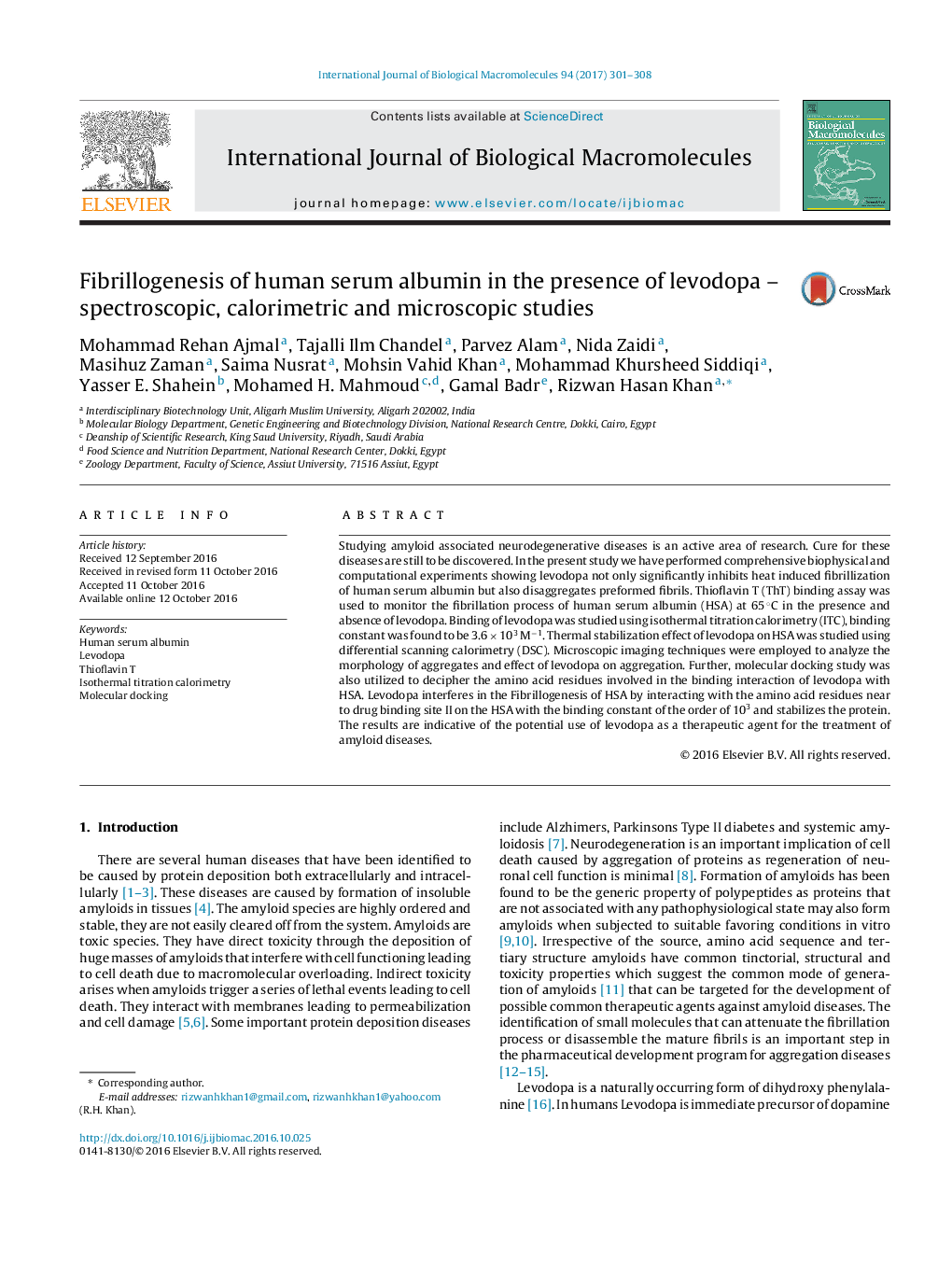| Article ID | Journal | Published Year | Pages | File Type |
|---|---|---|---|---|
| 5512501 | International Journal of Biological Macromolecules | 2017 | 8 Pages |
Abstract
Studying amyloid associated neurodegenerative diseases is an active area of research. Cure for these diseases are still to be discovered. In the present study we have performed comprehensive biophysical and computational experiments showing levodopa not only significantly inhibits heat induced fibrillization of human serum albumin but also disaggregates preformed fibrils. Thioflavin T (ThT) binding assay was used to monitor the fibrillation process of human serum albumin (HSA) at 65 °C in the presence and absence of levodopa. Binding of levodopa was studied using isothermal titration calorimetry (ITC), binding constant was found to be 3.6 Ã 103 Mâ1. Thermal stabilization effect of levodopa on HSA was studied using differential scanning calorimetry (DSC). Microscopic imaging techniques were employed to analyze the morphology of aggregates and effect of levodopa on aggregation. Further, molecular docking study was also utilized to decipher the amino acid residues involved in the binding interaction of levodopa with HSA. Levodopa interferes in the Fibrillogenesis of HSA by interacting with the amino acid residues near to drug binding site II on the HSA with the binding constant of the order of 103 and stabilizes the protein. The results are indicative of the potential use of levodopa as a therapeutic agent for the treatment of amyloid diseases.
Related Topics
Life Sciences
Biochemistry, Genetics and Molecular Biology
Biochemistry
Authors
Mohammad Rehan Ajmal, Tajalli Ilm Chandel, Parvez Alam, Nida Zaidi, Masihuz Zaman, Saima Nusrat, Mohsin Vahid Khan, Mohammad Khursheed Siddiqi, Yasser E. Shahein, Mohamed H. Mahmoud, Gamal Badr, Rizwan Hasan Khan,
